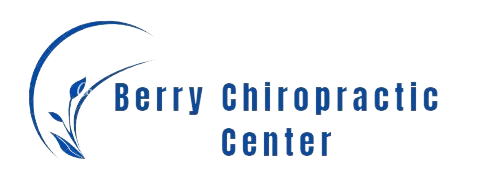Daniel David Palmer invented chiropractic in the late 19th century, inspired by the body’s natural healing ability. This hands-on healing technique originated from Palmer’s interaction with Harvey Lillard, who lost his hearing unexpectedly. Despite challenges, this method evolved into a recognized yet contentious healthcare form. Understanding chiropractic’s origins and development enhances its current importance in healthcare.
The Inception of Chiropractic
Daniel David Palmer founded chiropractic in the late 19th century, emphasizing the body’s self-healing ability. This alternate healing method faced criticism due to lack of empirical evidence and standardization in training. Yet, patient testimonials detailing health improvements helped it gain popularity. Over time, chiropractic addressed these criticisms by introducing rigorous training, research institutions, and integrating with mainstream healthcare. Despite debates, chiropractic remains a popular choice for non-invasive, holistic health approaches. Thus, chiropractic’s inception marked a significant shift in healthcare understanding and approach.
The Man Behind the Method
Daniel David Palmer, a Canadian-American, is credited for the foundation of Chiropractic. He played a crucial role in developing and popularizing this hands-on healing technique. The next section delves into Palmer’s journey and how Chiropractic was born.
Daniel David Palmers Journey
Daniel David Palmer, the founder of chiropractic, embarked on an intense study of human anatomy and health sciences. His deep curiosity led to his innovative healing method, despite its controversial start. Influenced by his magnetic healing experiences, Palmer faced skepticism and resistance. However, his unwavering commitment to his treatment method led to the birth of chiropractic.
Invention of Chiropractic
Palmer, through comprehensive human body study, innovatively conceived chiropractic. He developed a healing technique focusing on manual spine adjustment, pioneering a natural health care system and opposing prevalent drug and surgery dependence. Chiropractic, Palmer’s method, offers benefits by correcting spine misalignments or subluxations to restore health. The method reduces pain, enhances function, and improves mobility. The key benefits of spinal adjustments, for example, are seen in the improved overall wellbeing of many chiropractic patients. Despite initial doubts, thorough research and clinical results have validated chiropractic, making it a globally acknowledged health profession. The method continues to develop, retaining its core principles.
Initial Inspiration: Lillard’s Hearing Loss
The initial inspiration for chiropractic was Harvey Lillard’s hearing loss. Lillard, a janitor, led a physically demanding life involving extensive manual labor. An unexpected hearing loss occurred, possibly due to his strenuous lifestyle or a traumatic event.
The cause of Lillard’s hearing impairment remains unclear, but it drastically affected his auditory abilities. This incident sparked Daniel David Palmer’s interest. Palmer’s pursuit of a unique treatment for Lillard’s condition led to the invention of chiropractic, a new field in alternative medicine.
Chiropractic’s First Adjustment
D.D. Palmer, a magnetic healer, executed the first chiropractic adjustment on Harvey Lillard, marking the inception of chiropractic practice. Palmer’s interest was piqued by Lillard’s hearing loss, allegedly stemming from a back injury. Palmer’s hypothesis was that a spinal misalignment, or vertebral subluxation, caused Lillard’s condition.
Palmer implemented what would later be known as adjustment techniques. These techniques are integral to chiropractic philosophy, centered around these principles:
- The body possesses inherent intelligence with healing capabilities
- Spinal misalignments can disrupt the flow of this inherent intelligence
- Adjustments can rectify spinal alignment, eliminating interference and promoting health
Following the adjustment, Lillard noted hearing improvement, validating Palmer’s method. This incident prompted the evolution of chiropractic practice, forming the basis for modern adjustment techniques and chiropractic philosophy.
The Birth of Palmer School of Chiropractic
D.D. Palmer, after developing his adjustment techniques, established the Palmer School of Chiropractic in 1897. This was the first institution teaching chiropractic methods, a significant milestone in Palmer’s legacy. The school, a blend of traditional medical knowledge and Palmer’s chiropractic principles, attracted students eager to learn non-invasive treatment methods.
Beyond teaching, the Palmer School of Chiropractic played a crucial role in chiropractic’s acceptance as a legitimate healthcare profession. It shaped regulatory standards and practices, contributed to chiropractic associations’ growth, and promoted field research. The school produced many chiropractic leaders, significantly impacting the healthcare industry.
The establishment of the Palmer School of Chiropractic marks an important historical event in chiropractic. It reflects D.D. Palmer’s vision and dedication and guides the profession’s future.
Challenges and Criticisms
Chiropractic faces challenges and criticisms, mainly from the medical community, focusing on ethical dilemmas, professional standards, and scientific validity.
- Ethical dilemmas: Critics suggest chiropractors may exaggerate treatment effectiveness, potentially misleading patients and causing delay or avoidance of effective medical treatments. This raises consent and care duty ethical issues.
- Professional standards: The chiropractic field is criticized for inconsistent professional standards, causing variable care levels and patient confusion.
- Scientific validity: The medical community criticizes chiropractic for insufficient scientific evidence. Although some studies indicate benefits for specific conditions, the overall evidence body is mixed. Critics view the lack of robust, consistent evidence as a reason not to promote chiropractic as primary health care.
Chiropractic needs to evolve, improve professional standards, and address ethical dilemmas to gain wider acceptance and credibility.
Evolution of Chiropractic Techniques
Chiropractic techniques have evolved, reflecting enhancements in human anatomy, physiology, and musculoskeletal disorder understanding. Modern adaptations demonstrate a shift from traditional manual adjustments to targeted, evidence-based methods. Advanced diagnostic tools are now integrated into techniques to identify and treat spinal abnormalities more effectively.
Chiropractic controversies have stimulated this evolution. Criticisms about traditional methods’ scientific rigor and potential risks prompted safer, more effective technique development. The Activator Method, using a handheld instrument, delivers a controlled, low-force impulse to the spine, reducing potential harm. The Flexion-Distraction technique employs a specially designed table to stretch the spine and isolate disc herniation areas, reducing invasive procedure necessity.
These innovations highlight the profession’s commitment to patient safety and efficacy. The ongoing chiropractic techniques evolution ensures relevance and responsiveness to changing healthcare needs. Despite progress, research and critical examination must continue to refine these methods and address residual controversies. This is vital to sustain chiropractic’s credibility and acceptance in the broader medical community.
Chiropractic’s Expansion Globally
Chiropractic’s global expansion is a key evolution aspect, spreading techniques and fostering cultural adaptations. This discussion focuses on the speed and nature of this worldwide proliferation, and how cultural contexts shape its use.
Global Chiropractic Practice Growth
What has propelled chiropractic care’s global expansion? Key factors are the establishment of chiropractic regulations, the diversity in chiropractic techniques, and increased awareness of this non-invasive, drug-free alternative to traditional medicine.
- Chiropractic regulations in numerous countries have granted credibility to the profession, driving its growth.
- The adaptability of diverse chiropractic techniques across different cultures has facilitated global expansion.
- The global spread is also due to the growing acceptance of chiropractic care as a non-invasive, drug-free alternative to traditional medicine.
Understanding the challenges of global chiropractic growth is crucial to enhance its acceptability and extend its reach worldwide.
Cultural Adaptations of Chiropractic
Chiropractic care, gaining universal acceptance, adapts culturally to facilitate global adoption. Its healthcare approach, derived from chiropractic folklore, resonates with diverse cultures due to the shared belief in self-healing. Indigenous influences shape chiropractic care, aligning it with traditional healing methods. Notably, Asian cultures’ emphasis on spinal alignment mirrors chiropractic’s focus on spinal adjustments. Likewise, Native American holistic healing parallels chiropractic’s whole-body approach, fostering cultural synergy and aiding global expansion.
The Role of Chiropractic Today
Chiropractic plays a crucial role in today’s healthcare by offering non-invasive treatment for musculoskeletal conditions. Its effectiveness is recognized, though it has faced controversy. The debate often centers on the scope of practice, with objections raised against chiropractors performing procedures typically linked with mainstream medicine. The role of chiropractic in managing spinal disorders, however, is universally accepted.
Chiropractic’s role today is threefold:
- It provides holistic care, considering the patient’s entire body, lifestyle, and overall wellness.
- It offers preventive care, potentially averting conditions like chronic back pain.
- It enhances athletic performance, with many professional athletes depending on it for maintaining optimal physical health.
Despite occasional controversies, chiropractic’s key role in the healthcare system is evident. As the demand for non-invasive, holistic treatments grows, chiropractic’s role is set to become even more vital.
Significant Studies on Chiropractic
Chiropractic care studies confirm its efficacy. A 2017 Journal of Manipulative and Physiological Therapeutics study revealed chiropractic treatment significantly cut pharmaceutical pain management use in elderly individuals. The National Center for Complementary and Integrative Health’s 2018 research indicated positive outcomes from chiropractic interventions for chronic lower back pain patients, enhancing physical function and reducing pain intensity. In a 2013 European Journal of Public Health report, spinal pain patients receiving chiropractic care showed higher satisfaction levels than those with traditional medical treatment. These empirical studies validate chiropractic care’s effectiveness in managing health conditions, but more extensive research is needed for comprehensive understanding. The goal is to provide the best patient care based on solid scientific proofs.
Misconceptions About Chiropractic
Chiropractic care misconceptions often distort its true benefits. The following clarifications address these myths:
- Chiropractic’s scientific basis: Chiropractic care is grounded in solid scientific research. It has demonstrated effectiveness in treating conditions like lower back pain, neck pain, and headaches.
- Chiropractic care’s age range: People of all ages, including children and the elderly, can benefit from chiropractic treatment. It enhances posture, boosts athletic performance, and eases age-related conditions.
- Pain during chiropractic adjustments: While some discomfort might occur during adjustments, many patients experience immediate relief post-session. However, it’s important to understand the signs of a problematic adjustment. If you are concerned about any discomfort or side effects after a visit, it’s helpful to know about potential risks. For more information, learn what to know about chiropractic treatment risks and how to differentiate between normal discomfort and more serious symptoms.
These misconceptions’ dismissal aids in understanding chiropractic care’s genuine advantages. Although patient experiences differ, the consensus underscores chiropractic’s positive health impact.
The Future of Chiropractic Medicine
Future chiropractic medicine will be shaped by technological advances and its evolving healthcare role. Technology can increase the efficiency and effectiveness of chiropractic treatments. Chiropractors’ expanding role influences healthcare through integration, collaboration, and patient care.
Technological Advances in Chiropractic
Emerging technologies are driving advancements in chiropractic medicine, enhancing both diagnostic precision and treatment effectiveness. Key improvements include digital integration, advanced imaging, and telehealth services.
Digital integration, particularly through Electronic Health Records (EHRs), streamlines patient care by enabling accurate and efficient patient history tracking. Improved imaging technologies offer detailed views into spinal structures and abnormalities, aiding in superior diagnostics. Telehealth, meanwhile, expands access to chiropractic care, especially for patients in remote areas or with mobility challenges.
These technological advancements are shaping a more advanced and inclusive future in chiropractic medicine. Each development contributes to improved patient care, whether through increased precision, efficiency, accessibility, or a combination of these factors.
Chiropractic’s Role in Healthcare
Chiropractic medicine significantly contributes to global healthcare, particularly in treating musculoskeletal conditions. Despite debates on its scope and effectiveness, the field continues to grow. Chronic pain and disability sufferers increasingly turn to chiropractic’s non-invasive, patient-centered approach. Insurance coverage for chiropractic services, though contentious, is gaining recognition. Disparities in access remain and need addressing to ensure equity. The role of chiropractic in healthcare is set to expand in the future.
Frequently Asked Questions
How Long Does a Typical Chiropractic Treatment Session Last?
A chiropractic session typically spans 20 to 30 minutes, with duration adjusting to individual needs and targeted benefits.
Does Health Insurance Typically Cover Chiropractic Care?
Health insurance plans’ coverage for chiropractic care greatly varies. Some policies provide extensive coverage, while others impose limitations or exclusions. For accurate details, always examine your specific insurance policy.
What Are the Potential Side Effects of Chiropractic Adjustments?
Chiropractic adjustments can lead to temporary side effects, including discomfort, fatigue, and headaches. These effects, often mild, usually resolve within 24 to 48 hours.
How Frequently Should One Get Chiropractic Adjustments for Chronic Pain?
The frequency of chiropractic adjustments for chronic pain depends on the individual’s unique needs, including pain threshold improvement. This frequency is determined by a chiropractor who considers various adjustment techniques suitable for the patient’s specific condition. Regular consultations are advised.
What Qualifications Are Required to Become a Licensed Chiropractor?
A licensed chiropractor requires a Doctor of Chiropractic degree and must pass state and national board exams.






